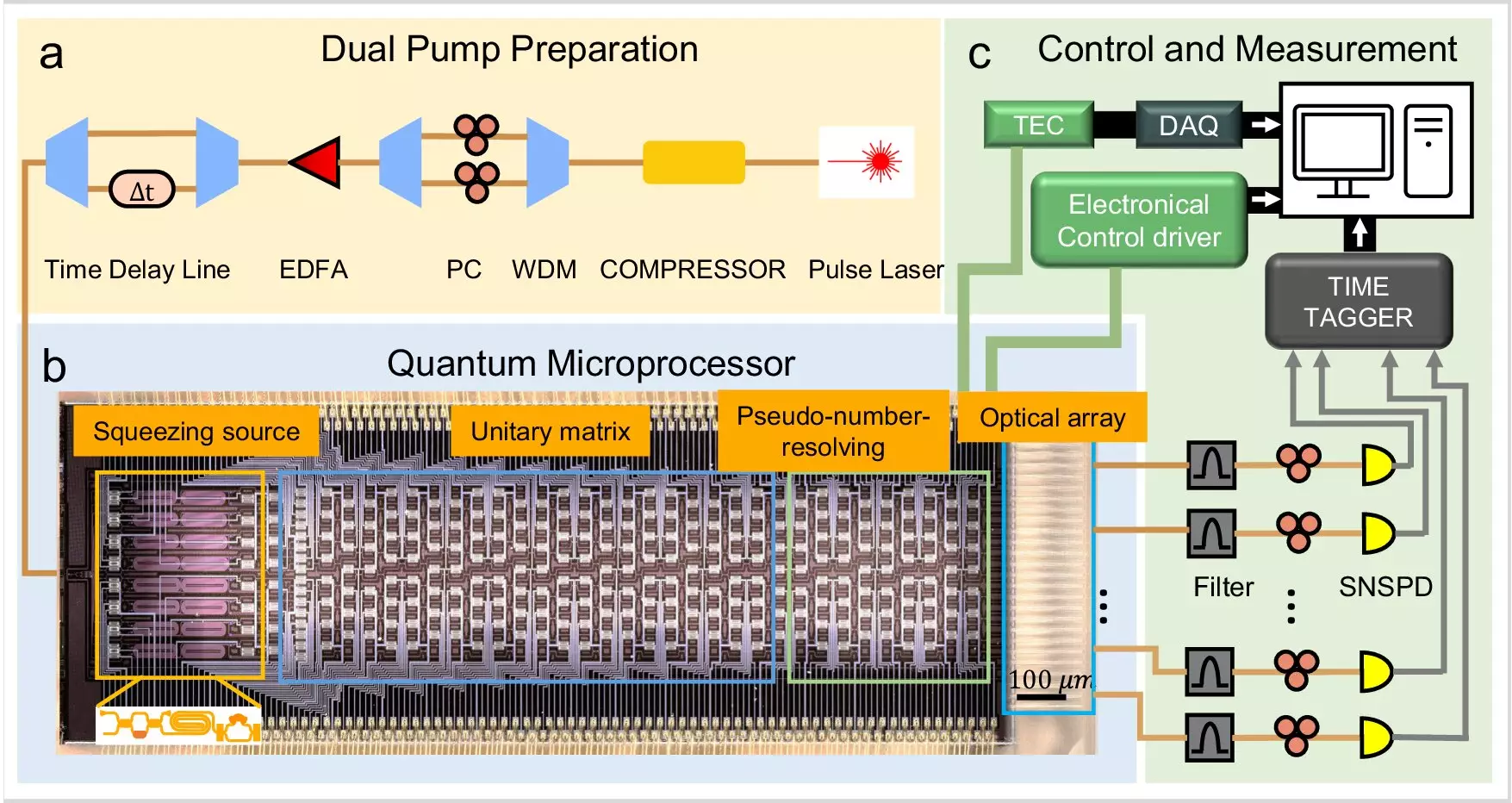In recent years, quantum simulation has emerged as a groundbreaking frontier in scientific research, enabling unparalleled explorations of complex systems that classical computers struggle to comprehend. The ability to simulate intricate phenomena has immense applications across diverse fields, including finance, cybersecurity, pharmaceuticals, artificial intelligence, and machine learning. A particularly fascinating area of study is the molecular vibronic spectra, a critical component for understanding molecular properties crucial for molecular design and analysis. Traditionally, this problem has posed significant computational challenges, remaining intractable for conventional supercomputers, making the exploration of quantum technologies all the more vital.
Recent developments in quantum computing have showcased the potential to revolutionize molecular spectroscopy. Engineering researchers at The Hong Kong Polytechnic University have made a monumental stride by successfully creating a quantum microprocessor chip able to simulate molecular vibronic spectra of intricate and larger molecules. This achievement stands as a world-first milestone in the quest to accurately capture quantum effects, which requires sophisticated simulations that consider phenomena such as quantum superposition and entanglement. The nuances of these quantum characteristics make them exceptionally challenging to model using classical computational approaches.
Published in the esteemed journal *Nature Communications*, the researchers’ study titled “Large-scale photonic network with squeezed vacuum states for molecular vibronic spectroscopy” marks a significant landmark in quantum technology. The research is led by Professor Liu Ai-Qun, a renowned figure in quantum engineering and science, alongside Dr. Zhu Hui Hui, the principal project driver and the first author of the study. Their collaborative effort, which includes institutions such as Nanyang Technological University and Chalmers University of Technology in Sweden, underscores the multidisciplinary approach essential for scientific breakthroughs in quantum simulation.
At the heart of this groundbreaking research lies a 16-qubit quantum microprocessor chip, meticulously engineered and integrated into a single compact unit. This chip has been developed alongside an extensive system comprising hardware integration for optical, electrical, and thermal packaging, culminating in a robust quantum photonic microprocessor equipped with an electrical control module. Through the innovative use of a linear photonic network and squeezed vacuum quantum light sources, Dr. Zhu’s team has not only demonstrated the chip’s capabilities but has also provided a theoretical model supportive of this simulated approach.
This quantum computer system acts as a fundamental building block for tackling challenging molecular simulations, enabling researchers to explore simulations of large protein structures and optimize molecular interactions with enhanced speed and precision—outstripping traditional computational methods. Dr. Zhu has noted the revolutionary implications of their work, positing that their methodology may usher in a new era of practical molecular simulations, operating far beyond the boundaries established by classical computational approaches.
The implications of the work conducted at The Hong Kong Polytechnic University reach far beyond academic curiosity. Quantum technologies are set to play a pivotal role in multiple scientific disciplines, including materials science, chemistry, and condensed matter physics. The development of quantum microprocessor chips offers a promising alternative for quantum information processing that could lead to transformative breakthroughs in a variety of applications—from molecular docking challenges to quantum machine learning applications like graph classification.
Professor Liu envisions a future where quantum simulation technologies may address pressing societal and industrial challenges. The team, buoyed by their recent successes, aims to scale up their microprocessor technology to tackle even more complex applications. The potential for quantum speed-ups in relevant quantum chemistry applications signifies a transformative leap that could reshape our understanding of molecular interactions and pave the way for advancements in drug discovery, materials development, and beyond.
The advancements showcased by the researchers at PolyU represent a significant leap in the quest for practical quantum computing applications. Their successful undertaking of molecular spectroscopy simulation using quantum microprocessor technology illustrates the promising intersection of quantum science and real-world problem-solving. As they push forward, the commitment to addressing complexities within quantum chemistry presents exhilarating possibilities for scientific innovation, ultimately redefining computational limits and fostering societal advancement through the power of quantum technologies.


Leave a Reply